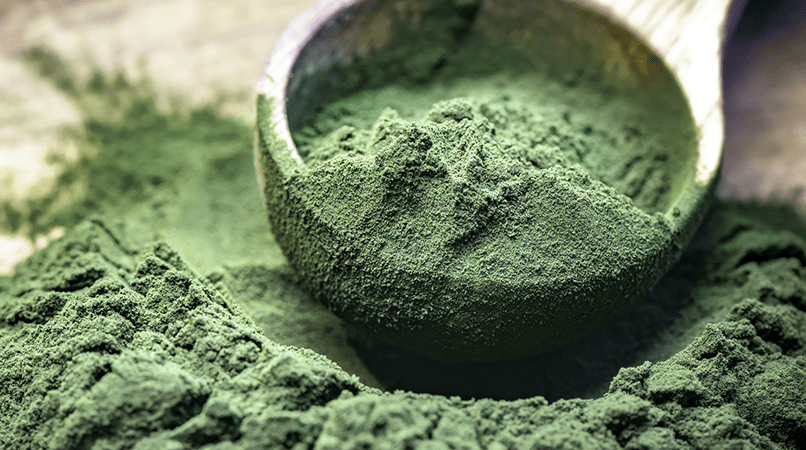Determination of Biomass in Spirulina Cultures

What is Spirulina?
Spirulina is a microscopic cyanobacteria that can be consumed by both humans and animals, as either a whole food or food supplement.
The distinctive blue-green bacteria is often touted as a ‘superfood’, due to its high density of proteins, vitamins and antioxidants. The nutritional profile of the food means that it may help to lower cholesterol, improve diabetes management and prevent heart disease as well as all-round health. For animals, spirulina is often used as a fish feed or as a livestock supplement.
With plenty of applications for Spirulina, the commercialisation of spirulina is big business. But ensuring that maximum profits are generated, understanding how spirulina grows and when to harvest is an important aspect.
How Does Spirulina Grow?
Spirulina is a free-floating bacteria that typically grows on the water’s surface in tropical and sub-tropical climates. Because Spirulina are autotrophic, they produce their own energy source, but are most often found in conditions where water pH and temperatures of 9.5-10.0 and 30℃ respectively are present. A high alkalinity is often present by a high concentration of both carbonates and bicarbonates – both necessary for spirulina growth.
However, it is also possible for Spirulina to be farmed for commercial purposes. Replicating natural growth conditions requires monitoring and optimisation of the following properties:
1. Water Quality
Although spirulina is robust enough to grow in a broad of conditions, having a water source that is optimum pH and rich in carbonates and bicarbonates will maximise spirulina production.
2. Light
Growing spirulina at commercial scale will require the use of artificial light. The wavelength of the light, and the intensity will directly impact the colour and nutritional content of the spirulina.
3. Temperature
Spirulina growth is highest at 30℃, with temperatures either side risking production output.
4. Water Agitation
As spirulina grows, only the top surface will be exposed to sunlight. Water must be agitated to ensure that the bacteria is rotated to prevent any cells from dying.
Fluctuations outside of the typical growing conditions for spirulina can affect the growth rate, and properties such as the colour and protein content. This makes spirulina farming cost ineffective.
Growth Rate of Spirulina
Controlling the range of spirulina growth factors listed above will help to maximise spirulina output. But because spirulina is a bacteria, it follows the typical growth curve that we’ve previously outlined in our article about understanding OD600 and cell growth.
Therefore when it comes to harvesting spirulina on an industrial scale, understanding when maximum output has been achieved, but before cell death.
There are a few ways to determine spirulina biomass.
Biomass Determination Methods
When it comes to measuring spirulina, there are a few different properties of spirulina that can be analysed in the lab or directly at the spirulina tank.
Optical density (OD) is one of the most common parameters to monitor and typically involves the use of a benchtop spectrophotometer. The optical density correlates to the concentration of spirulina present and can help determine at which stage of the bacteria growth curve the spirulina is going through.
Alternative measurements to optical density include turbidity and light scattering. Both of these methods can determine the mass of spirulina present when compared to control data. The higher the concentration of spirulina, the higher the measured value of both turbidity and light scattering that will occur.

Improving Efficiency For Spirulina Farmers
Regardless of which methods (mentioned above) you currently use to measure your spirulina crop, all methods require analytical equipment that are typically found in the lab. Due to the size and complexity of these instruments, obtaining results typically means taking samples and transporting them to a lab. Not only is this time consuming, it can result in inaccurate results and be a costly method.
A better, more efficient method to measure your spirulina culture is using our Photopette® instrument. Our handheld spectrophotometer allows users to take measurements in seconds, with no training or specialist knowledge required.
Due to the flexibility of the instrument, we are able to build Photopette® Custom devices supporting the possible to take measurements at 565 nm (phycocyanin complex), 680 nm (chlorophyll) and 750 nm (turbidity caused by cells) to match the wavelength to optical density, turbidity or light scattering method respectively, of choice.
FAQs
- Where does spirulina grow?
Spirulina typically grows in bodies of water that have a high pH level and are rich in minerals. Spirulina typically grows in tropical and subtropical climates. - What are the benefits of spirulina?
Spirulina is beneficial to both humans and animals. It can be consumed on its own as a ‘superfood’ or it can be added to foods or taken as a supplement for animals such as livestock and fish. - How can you determine spirulina growth?
To determine the mass of spirulina at any one point, you can typically use one – or a combination of – optical density, turbidity and light scattering. However, with our Photopette® option, it is possible to measure all three with one handheld instrument. - What factors influence spirulina growth?
Spirulina growth is impacted by factors including water quality, light, temperature and water agitation. Ensuring as many of these factors stay as close to the optimum as possible will maximise spirulina output.

